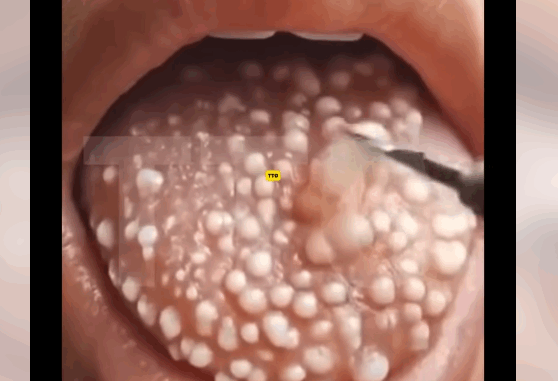
The Hidden Infection Millions Carry Without Knowing: What You Should Know About HPV
What if one of the most common infections in the world was spreading silently — and you had no idea it was inside your body? That’s the reality for millions of people living with human papillomavirus (HPV), a stealthy infection so widespread that most s*xually active adults will encounter it at some point. The unsettling part? You might never notice until complications arise.

Why HPV Is Everywhere — Yet Overlooked
HPV is the most common s*xually transmitted infection (STI) worldwide, with the CDC estimating that nearly 80% of s*xually active people will contract it at least once in their lives. Unlike infections that bring obvious symptoms, HPV often lurks unnoticed. No itching, no pain, no warning signs — yet it can still be passed on to partners.
That hidden nature makes HPV a silent public health challenge. In most cases, the body’s immune system clears the virus naturally. But when it doesn’t, certain strains can trigger long-term issues ranging from genital warts to more serious outcomes like cervical, throat, anal, and other cancers.
Two Faces of HPV: Low-Risk vs. High-Risk
HPV isn’t just one virus — it’s a family of more than 150 related viruses, each with its own number, or “type.” Doctors typically split them into two categories:
Low-risk types: These usually cause mild issues, such as genital warts or minor cell changes.
High-risk types: Far more concerning, these can cause lasting cellular damage. HPV-16 and HPV-18 are the most infamous strains, linked to the majority of HPV-related cancers.

Why You May Never Realize You Have It
One of HPV’s most alarming traits is how easily it goes undetected. You could carry it for months or years without symptoms, unknowingly transmitting it to partners along the way. Because infection is possible even without intercourse — through simple skin-to-skin genital contact — its spread is nearly impossible to track.
This is why doctors emphasize regular screening. For women, Pap smears and HPV tests can catch abnormal cell changes before they become cancerous. For men, while routine testing isn’t standard, awareness and safe practices are key.
Protecting Yourself Against HPV
The good news? You’re not powerless. Here’s how to reduce your risk:
Get vaccinated: The HPV vaccine is safe, effective, and protects against the most dangerous strains.
Use protection: Condoms and dental dams can lower (but not eliminate) risk.
Stay proactive: Routine checkups and screenings are vital, especially for women.
Final Thought
HPV is not just another acronym in s*xual health — it’s a reminder that the biggest threats are often the ones we don’t see coming. Silent, common, and underestimated, HPV can remain invisible for years before making itself known. But with knowledge, vaccination, and early detection, its risks can be managed — and in many cases, prevented altogether.
Don’t wait until symptoms appear. By then, HPV may already have done its damage. Take action now, because when it comes to your health, being proactive is always better than being surprised.
News World Business TecNews World Business Tech Healthy Tips She walked into the premiere and turned Hollywood on its head. What did Madonna do in 1985 that made everyone stop and stare?h Healthy Tips She walked into the premiere and turned Hollywood on its head. What did Madonna do in 1985 that made everyone stop and stare? 
In 1985, the red carpet premiere of Desperately Seeking Susan became more than just a movie debut—it turned into a cultural flashpoint. At the center of it all was Madonna, who, by then, was already a rising star in the music world thanks to hits like
Holiday and Like a Virgin. Yet on that night, as she walked into the theater with cameras flashing and fans screaming, it became clear that she wasn’t simply a pop singer on the rise. She was redefining what it meant to be a celebrity in the 1980s.

Madonna’s arrival was electric. She didn’t just wear clothes—she wore an attitude. Her look was a perfectly curated yet seemingly effortless mix of punk rebellion, glam sensibility, and downtown New York grit. Layers of lace, fitted leather jackets, oversized bows, crucifix necklaces, bangles stacked up her arms, and those now-iconic fingerless gloves became more than accessories—they were symbols of a new kind of self-expression. She exuded a “take me as I am” confidence that clashed with Hollywood’s polished elegance, and that clash became her magic. Critics may have debated the tastefulness of her style, but no one could deny its impact.
For many young women watching from afar, Madonna’s fashion choices were revolutionary. They weren’t about perfection—they were about personality. She gave permission to mix high and low fashion, to make thrift-store finds as powerful as designer pieces, and to use clothing as a form of rebellion. Teenagers across America and beyond imitated her layered necklaces, tousled hair, and bold makeup, launching what came to be known as the “Madonna wannabe” phenomenon. For the first time, a red carpet wasn’t only about Hollywood glamour—it was about street style meeting stardom.

The premiere also marked Madonna’s transition into film. Desperately Seeking Susan wasn’t her first time on camera, but it was her first major role that captured her personality so vividly. She played Susan, a free-spirited drifter who embodied the same mix of mystery, charisma, and defiance that Madonna herself projected in real life. The line between character and performer blurred, making the film feel like an extension of Madonna’s own myth-making.
The movie was a surprise hit, resonating with audiences who saw in Susan—and by extension, Madonna—an alternative to the ordinary. It was about women searching for identity, freedom, and excitement outside traditional expectations. Madonna’s performance wasn’t just acting; it was a continuation of her ongoing statement: that women could be unapologetically bold, messy, stylish, and in charge of their own destiny.

But perhaps the most important thing about that 1985 moment was the cultural message it carried. Madonna wasn’t simply stepping into Hollywood; she was reshaping it. Up until then, pop stars who crossed into film often struggled to be taken seriously. Madonna, however, used her musical fame as a launchpad, and her film debut as proof that she was a multi-platform force. She was showing the world that the boundaries between music, fashion, and film could be torn down—and she was the one to tear them.
The press quickly caught on. Headlines weren’t just about the movie’s plot or reviews—they were about Madonna’s presence, her clothes, her impact. For some, she was scandalous, a challenge to traditional ideas of femininity and celebrity. For others, she was thrillingly fresh, a burst of authenticity in an industry built on polished illusions. Either way, she was impossible to ignore.

Her timing could not have been more perfect. The 1980s were a decade hungry for reinvention and rebellion. MTV had transformed how music and image intersected, giving rise to stars who weren’t just heard but seen. Fashion was louder, bolder, more experimental, and Madonna was the embodiment of that shift. She wasn’t just riding the wave of pop culture—she was shaping it.
Looking back, the premiere of Desperately Seeking Susan wasn’t just another stop on Madonna’s rise—it was a turning point. It showed that she was not content to be confined to one lane. Music was only the beginning. She wanted film, fashion, influence, and above all, control over her narrative. And she got it. Over the decades, Madonna would continue to reinvent herself—sometimes controversially, always unapologetically—but that 1985 night crystallized the blueprint.

The cultural ripples from that moment are still felt today. Contemporary artists like Lady Gaga, Rihanna, and even Billie Eilish owe part of their artistic freedom to the path Madonna carved. The mix of music, fashion, and visual storytelling that is now standard in pop culture was, in many ways, pioneered by her ability to command attention across mediums.
When we revisit photos of Madonna on that red carpet—the layered lace, the messy curls, the knowing smirk—it’s not just nostalgia. It’s a reminder of how one woman stepped into a premiere and shifted the direction of pop culture. She showed that being a star wasn’t about fitting in—it was about standing out, about creating a persona so magnetic that the world had no choice but to watch.

In the end, the 1985 Desperately Seeking Susan premiere was more than just an introduction to Madonna the actress. It was the announcement of Madonna the icon. From that night forward, she wasn’t simply performing for audiences—she was leading them, daring them to see fame, fashion, and femininity in entirely new ways.
Madonna didn’t just walk the red carpet. She claimed it, rewrote its rules, and transformed it into a stage where self-expression mattered more than tradition. And in doing so, she didn’t just define the 1980s—she defined what it meant to be an icon for generations to come.